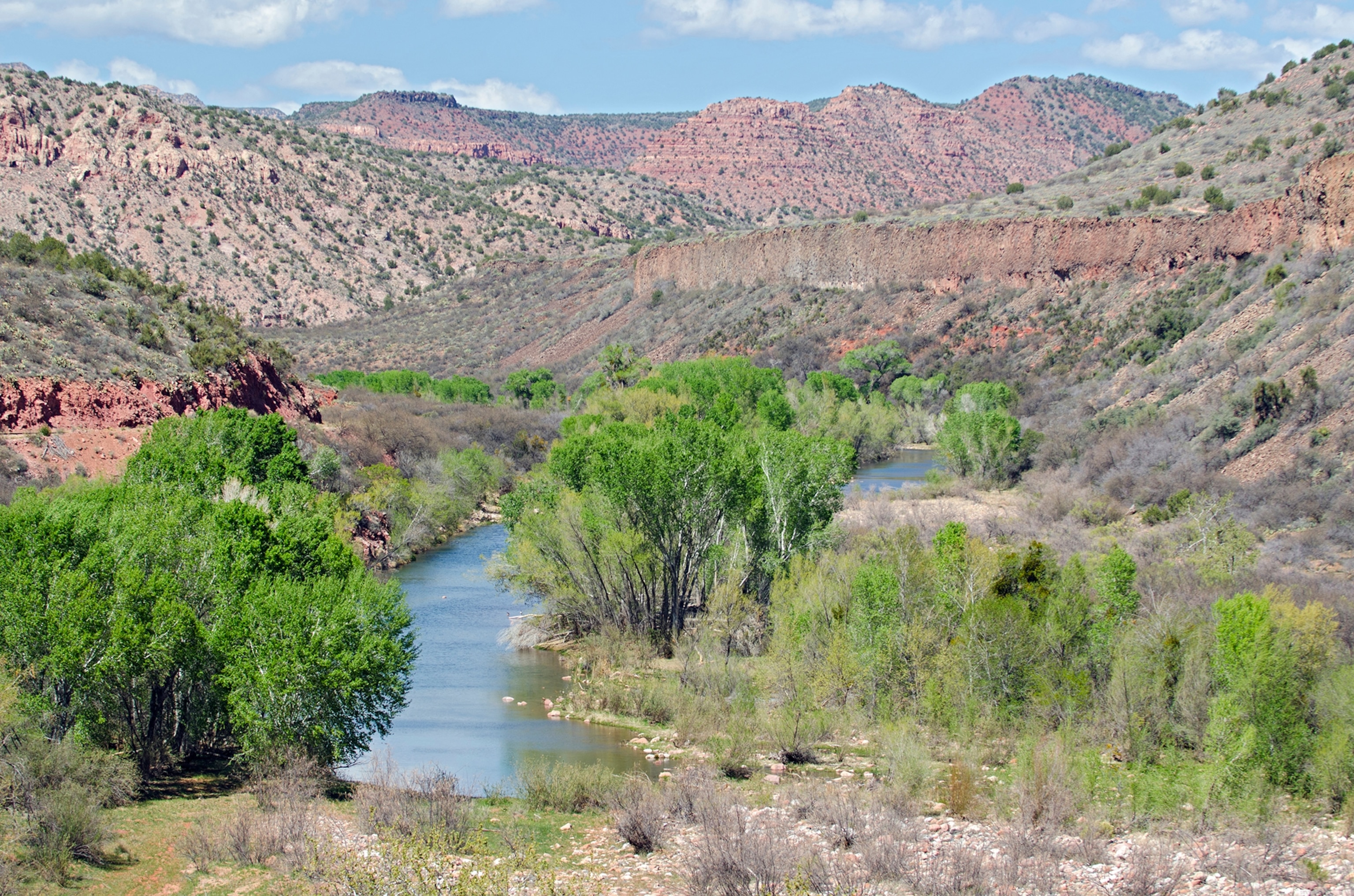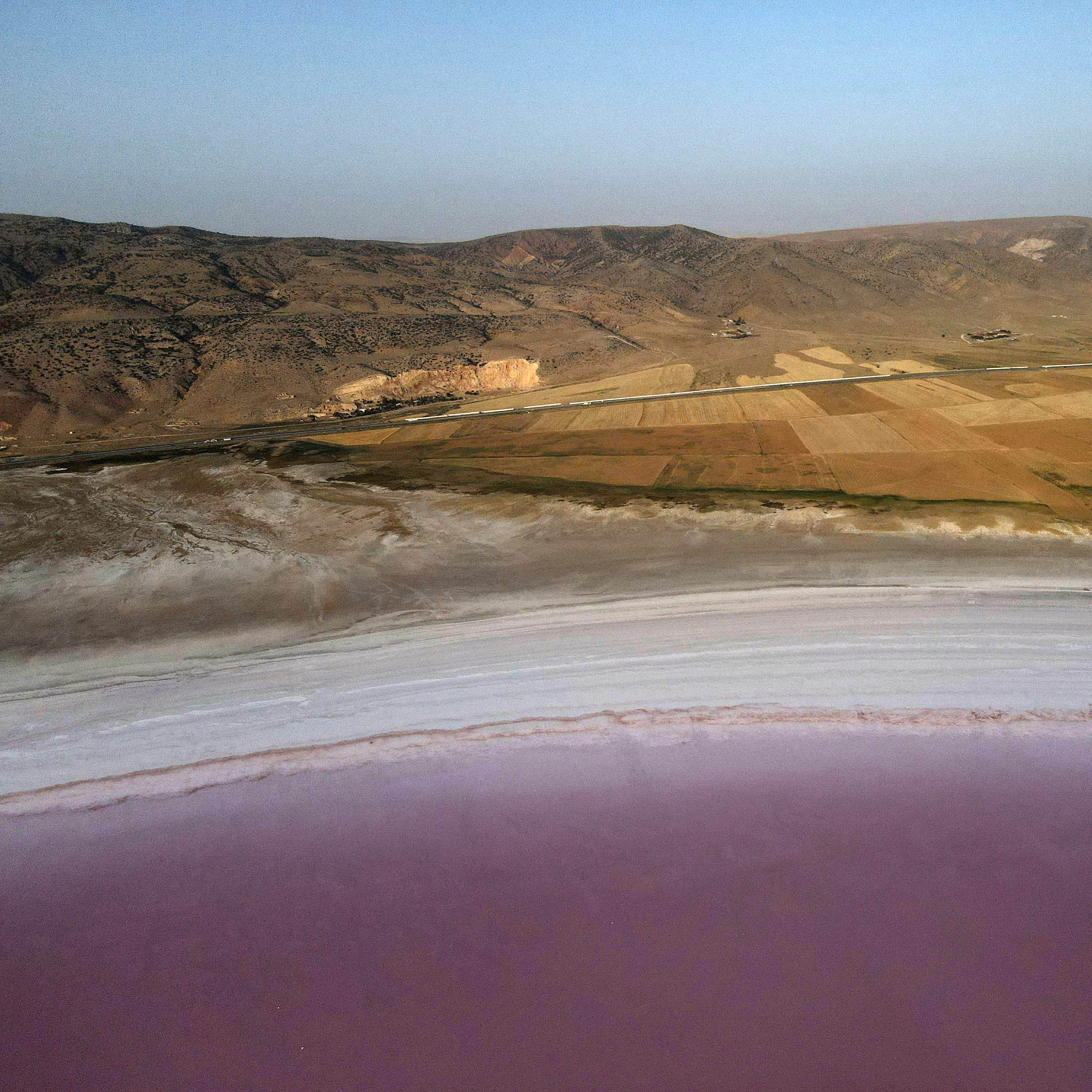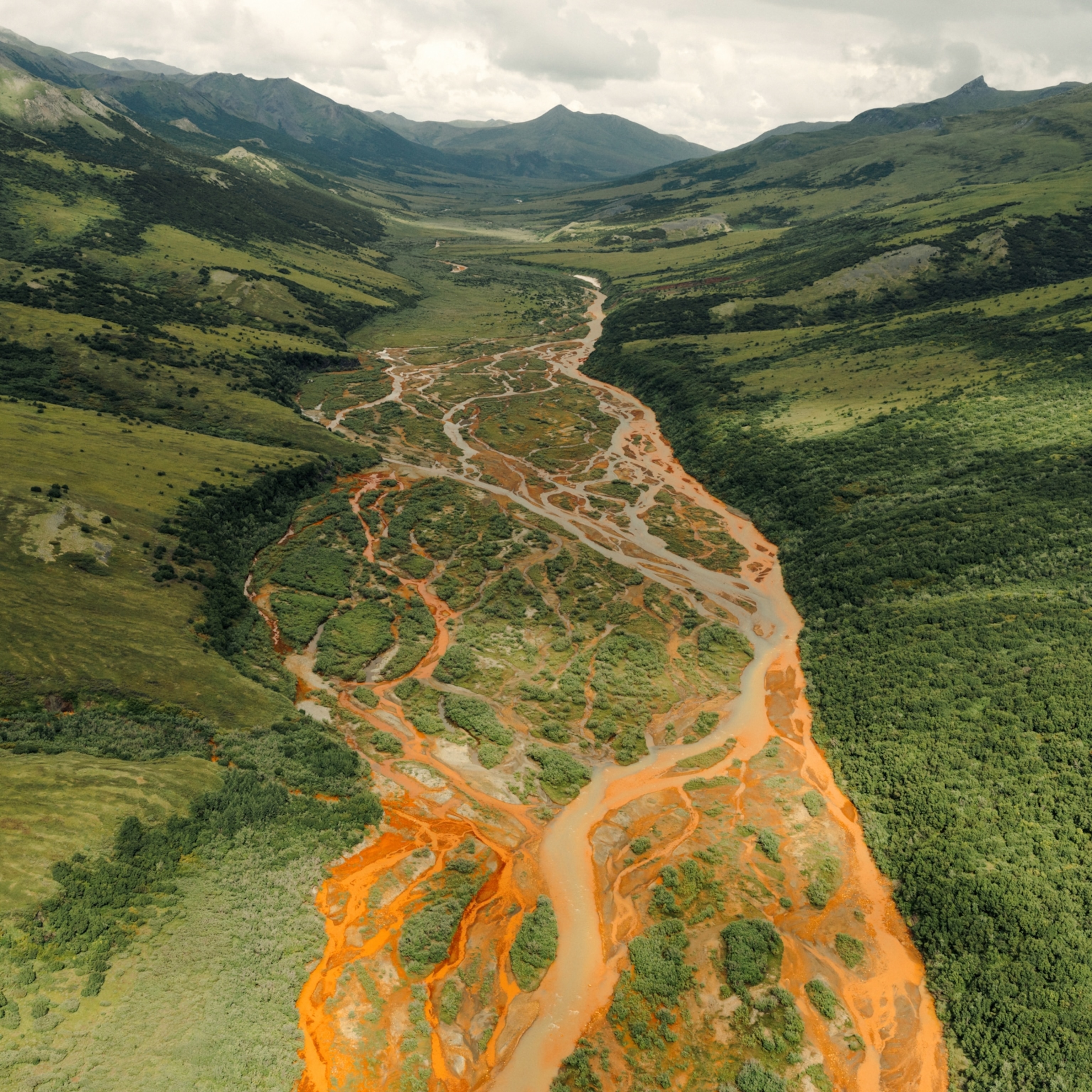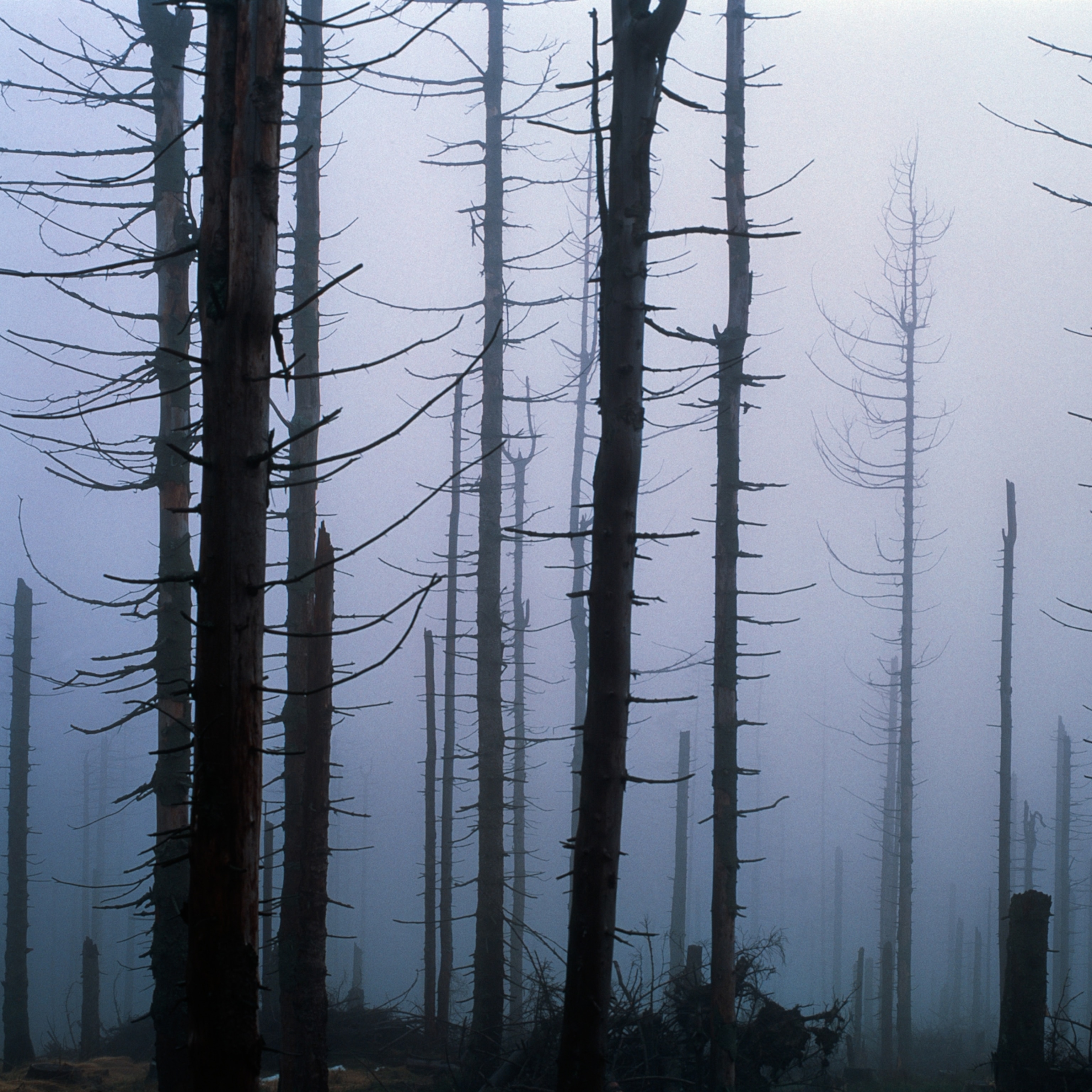
"Ditch Boss" Helps Keep a Thirsty River Flowing
Frank Geminden restores balance to Arizona's parched Verde River.
In mid-January Frank Geminden was picking the pecans off his 150 trees in central Arizona. First there was the shaking, with the fallen shells going through a machine to crack them open. Then came the shelling and sorting, and the bagging.
It wasn't a good year for pecans. A late frost in March 2013 ensured much of the yield would turn to dust.
"Some of them just disintegrated in the cracker," Geminden explained. "That's the thing about farming: You just never know what's going to happen."
Pecan farming is Geminden's latest adventure, more than it is a livelihood. In prior incarnations, he served in the Peace Corps, crafted and sold jewelry, and ran an engraving business. At 67 years old, his current "hobby" might be his most taxing.
Now he owns ten acres in Camp Verde, an Arizona town of nearly 11,000 residents in the middle of the Verde River Valley, about 90 miles (145 kilometers) north of Phoenix. In addition to the pecans, Geminden grows blackberries and tends to his five cows, which he will sell for beef. For several years he grew vegetables to sell at local farmers markets, but he eventually came to realize it just wasn't worth it.
"Farmers markets are hard," he says. "Profit margins were just not there. And they got corrupted with people bringing stuff they bought at the store, claiming that they grew them."
Despite changing crops, the margins are still scarce, he says. Selling pecans at between $10 and $15 per pound doesn't leave much room for error, but Geminden keeps the costs down by building and repairing his own equipment.
"I've got a bunch of old tractors that I've gotten from other people," he says. "Everything I own either has a dead battery or a flat tire."

Visitors often ask why Arizona farms have so much "junk."
It's not junk, Geminden says, but rather parts for future machines, such as the sorting device he built out of bicycle rims, chicken wire, and other reused machine parts. He wrapped the chicken wire around the circumference of three rims, making a cylinder. He tilted that and attached it to a rotor. He expanded the holes in the wire toward the bottom, so as the cylinder turns, smaller pieces of pecan fall through the smaller holes at the top. Gradually larger pieces drop out of the bigger holes toward the bottom.
Based on a tumbling machine one of his neighbors owns, it stands as a symbol of Geminden's ingenuity, the offspring of necessity. For Geminden, tending to his plants and selling the produce is a small part of the job. Building the machines he needs, fixing them when they break, and even doing his own plumbing is all in a day's work.
"Being a renaissance man is not very common in today's society, but I've always been handy," he says. That helps a lot on a farm, he adds.
Busy Ditch Boss
That handiness is also useful when Geminden is serving in his role as the local "ditch boss," a job that is relatively well known in parts of the West but not so familiar back East. A ditch boss is responsible for ensuring that people get the water they need.
Most farmers in the Verde Valley irrigate their fields the same way it was done in the 1860s. They put an earthen dam in the river channel, and the dam diverts water into a ditch. Lateral ditches then bring the precious flow to individual users. The system relies on gravity, without pumps.
The seven main ditches in the Verde Valley are each run by a board and administered by a ditch boss. Geminden is the boss of a ditch called Diamond S, the most downstream one in the valley. It runs for five miles (eight kilometers) off the Verde and serves 80 users, who irrigate a total of some 400 acres of crops and landscaping.
Geminden "fell into" his role as ditch boss shortly after he arrived in the area 22 years ago and, until recently, he did the work voluntarily. Last year, the district allocated a salary for the position.
The source of the ditch's water, the Verde River, runs 195 miles (314 kilometers) from its spring-fed source north of Prescott south to its confluence with the Salt River near Phoenix. Before being dammed, the Salt flowed into the Gila River west of Phoenix, and the Gila emptied into the Colorado River near Yuma, meaning the Verde is part of the lower Colorado River Basin. (Related: "The American Nile.")
In addition to opening and closing gates, Geminden's job includes dislodging debris that might obstruct the intake—kicking it loose himself if the clog is small and getting a backhoe to do the bigger jobs. He also serves as a liaison between the community and the water board that makes the decisions about the ditch.
Until fairly recently, no one thought much about how much water they took from the Verde River or its ditches. But with increases in demand and a recent decrease in the Verde's flow caused by a long-term drought in the region, it became clear that the river had limitations.
"When I first got there, we just took what we could," Geminden said. "We've gotten a lot more efficient these days."
Three years ago, Geminden started working with the Nature Conservancy to make the ditch more efficient. Last year, with supporting funds from the Change the Course Campaign, of which National Geographic is a partner, Geminden and the Nature Conservancy installed sensors in the gate control box that monitors the water level. An automatic motor now raises and lowers the gate to ensure the right amount spills into the ditch. The system is powered by a small solar panel. (See "Arizona Irrigators Share Water With Desert River.")
The team also put the flow data online so that Geminden can check it on his computer and new smartphone, and will quickly know if something goes wrong.
Of course, sometimes something goes wrong and he fields an angry call. His uniform for the job: a T-shirt that says "It's Frank's fault."
Next, they hope to make it so that Geminden can make adjustments via smartphone; as it is, he still regularly goes out to the control box to set the levels there.
Not only does all this technology make Geminden's job easier, it also ensures a smoother, more consistent flow, providing the water that farmers and residents need but leaving more water in their section of the Verde River. At times past, the river had gone completely dry, impacting the native fish, frogs, birds, and more than 90 species of mammals that depend on the water downstream.
The Verde River riparian corridor just north of Camp Verde boasts the highest avian density in recorded American history. The river provides a critical flyway for migratory birds, including egrets, snowy egrets, white-faced ibises, green-backed herons, and great blue herons. The Verde is also home to nesting bald eagles and the federally endangered southwestern willow flycatcher.
Down from 16, ten native fish species are still found in the Verde and its tributaries, including the endangered Colorado squawfish, razorback sucker, and spikedace. The river also supports the northern Mexican garter snake, the narrow-headed garter snake, and the lowland leopard frog, as well as the ever playful southwestern river otter.
There are also many people who enjoy the river for recreation—fishing, kayaking, tubing, and family picnics.
Farming Roots
Back on the farm, Geminden's wife, Karen, helps out with the chores, such as shelling the pecans or baling the hay.
"When you're a husband and wife team doing a business together, it can work," he explains. "If you have to hire someone, it's going to make it cost prohibitive."
Karen also keeps herself busy with her own hobbies, particularly riding horses, which she is happy to introduce.
"This one is a dressage [horse], she's a thoroughbred, and this here's a paint," she says as she feeds them warm porridge.
Frank smiles at this.
"Women and their horses. It's amazing."
Geminden didn't find farming alien when he moved to Camp Verde from Kentucky 22 years ago. His grandfather ran a 60-acre farm, and his father had a much smaller one that provided beef and other sustenance for the family.
"During the Depression, people survived by having a family garden," Geminden explained. "But it took a family to do that. It helped if you had a granny who knew how to use a shotgun to keep the varmints out."
For his primary occupation, Geminden's father made stylish wood cabinets, statues, and other furniture, some of which Geminden continues to proudly display in the house he shares with his wife.
Geminden studied agricultural economics in college and thought he might be a professor one day, but he realized he "couldn't drink enough coffee to be a state employee."
So a search for a less-caffeinated adventure took him to the Dominican Republic with the Peace Corps to work in community development.
After coming back to the U.S., Geminden followed in his father's artistic footsteps, but rather than woodwork, he crafted jewelry made out of old silverware. He sold leaf-shaped, silver-plated pendants and rings at art fairs.
Then, for awhile, he ran an engraving business making wedding invitations, plaques, and awards. But he quickly sold the whole business for a profit.
"That's what's worked for me, starting businesses and selling them and making some money at the other end of the deal," he says.
Some remnants of his businesses and his artwork can be found in a shed behind his house, though he hasn't made anything new in years.
"I'll get back to it," he says. "One day."
For now, there's just not enough time. When he's not tending to his crops and livestock, he might be found working on his tractors and other equipment. Or he might be out leveling a neighbor's farm.
Or he might be tending to the ditch.
Cooperation and Rights
Water is not quite yet a scarce commodity in Camp Verde, but that might only be because the water that residents get from the river is carefully distributed in an organized fashion.
Residents use a sign-up sheet by one of the gates to claim their share, writing down their names to get in line for the next chance to irrigate their land. After each person irrigates, they call the next person on the list to tell them it's their turn. If that person isn't ready, they call the next name down and so on.
"In other places, so many people never talk to their neighbors," Geminden says. "Here, the fact we share the water makes it necessary to communicate."
Naturally, Geminden's role means he knows everyone. On a visit to see a damaged part of the ditch, he calls on landowner Elvis Baker, a 93-year-old World War II veteran who flew bombers in the South Pacific.
Now, like Geminden, Baker has his plot of land where he engages in several hobbies, including wood crafts. Baker shows off a two-tone walnut table set, complete with salt and pepper shakers and sugar bowl.
"The women like this stuff," Baker says, as if in disbelief. "And I like making the women happy."
Despite the increasing demand and the decreasing supply, the locals' water rights are not quite so clear. The oldest water rights were implemented in the 1860s for area ranchers and farmers. Then, in the 1920s, newer water rights were granted to Phoenix and the surrounding area through a state agency and a water co-op that are collectively known as the Salt River Project. That means the water rights claimed by Geminden and his neighbors are questionable.
"When we came here, we fell in love with the place and didn't realize that the water could dry up anytime," Geminden explains. "It's the old saying: Nobody guarantees water."
It was fear of losing the water that drove Geminden to join the ditch board, and then take the job as boss.
And so Geminden watches the water flow like a hawk, though some challenges come without warning, like the damage at Baker's place. An old cottonwood tree was carried down the river, nearly taking out the side of the ditch with it. Water poured through the holes. Fortunately it occurred near the end of the season, but the repairs will cost more than $10,000.
Geminden's role has also made him an obvious target for people who want to express concerns about their future access.
"We have a constant level of apprehension that our irrigation rights are going to go south," he says, speaking literally and figuratively.
The thought recalls one of Geminden's favorite sayings: "Whisky is for drinking. Water is for fighting over."
Success
Last year, Geminden and his allies at the Nature Conservancy and Change the Course managed to reduce the amount of water taken out of the river by five cubic feet (141.5 liters) per second, which can boost the amount of flow in the river 50 to 100 percent during the driest part of the summer. The team is hoping to preserve a little more this coming year.
Geminden knows saving more water will mean more phone calls, as some residents mistakenly believe that it will mean less water for them, but he's confident they will come to understand that efficiency really means more for all, including for wildlife.
"Gravity always wins," he says. "Water always runs downhill."
For now, Geminden focuses on his pecans, his farm, and getting ready for the busier summer months.
"It could take up full-time if I did everything I'm supposed to do," he says, though he adds it's not the end of the world if he doesn't.
His doctor would just as rather he didn't, telling him, "You've got to start acting more like a 60-year-old rather than a 20-year-old."
One day he will, Geminden says, but that day isn't today.
Help restore water to the Colorado River Basin by joining Change the Course. Sign up online or text "River" to 77177.
Special thanks to Silk and Coca-Cola, Charter Sponsors for Change the Course. Additional funding generously provided by the Walton Family Foundation.








